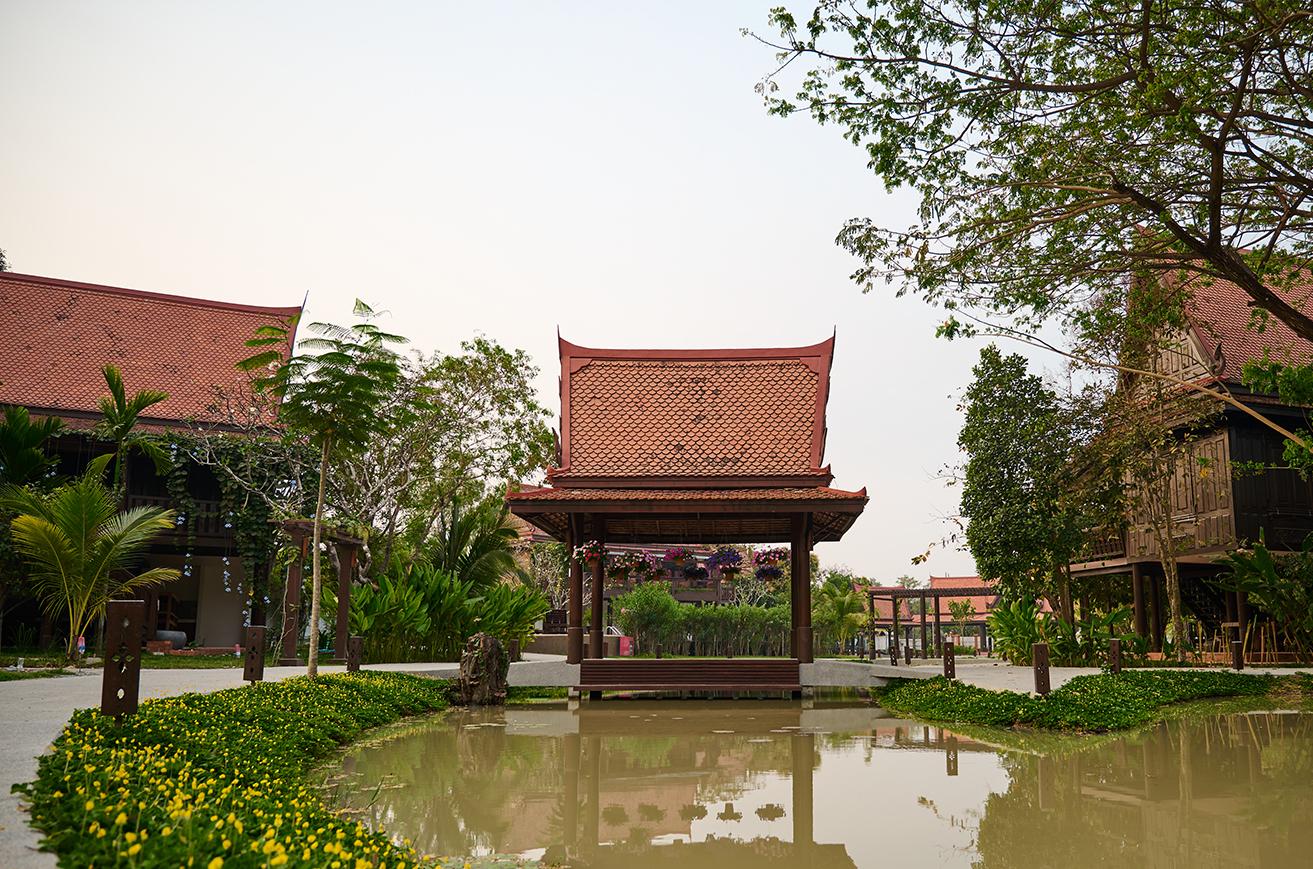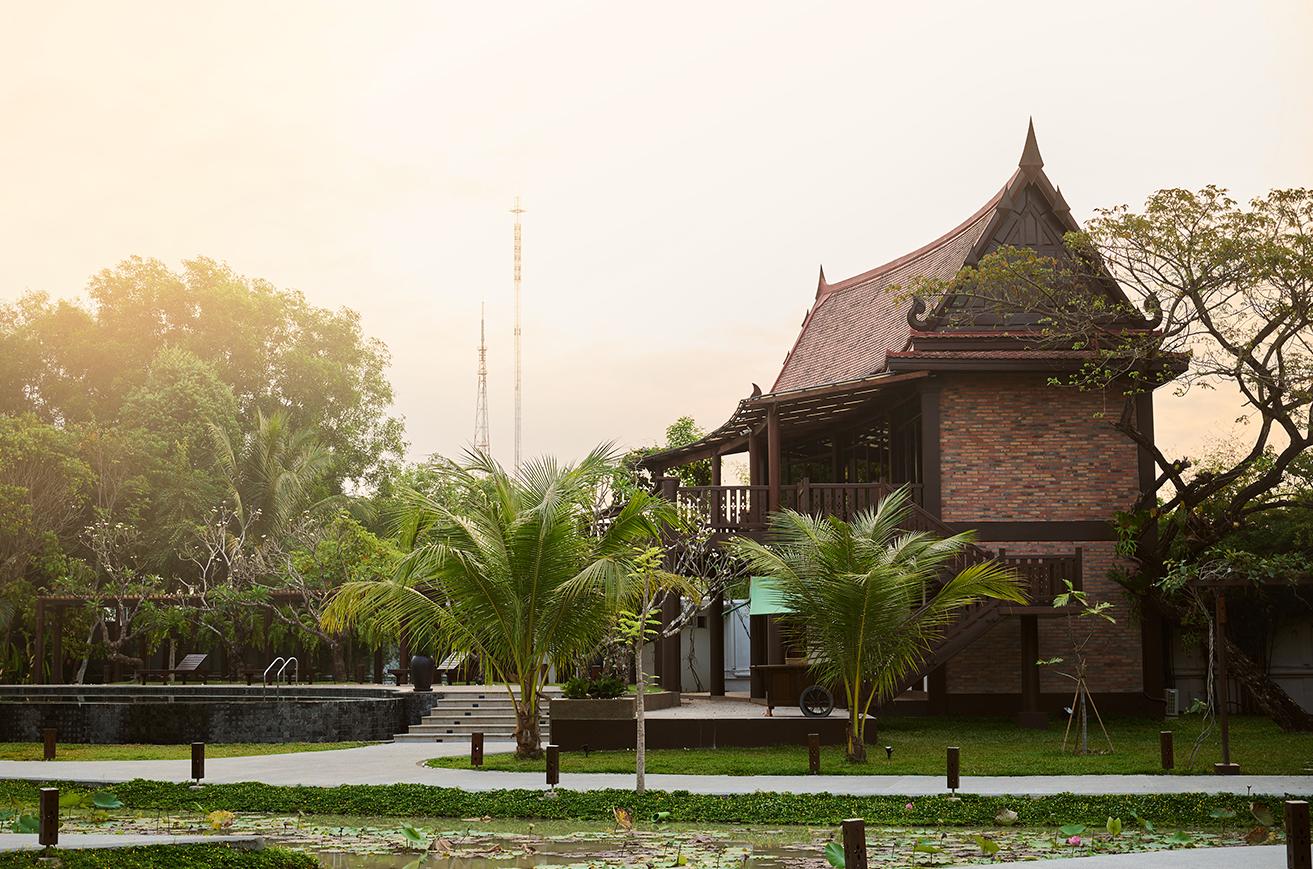Story of Phoum Chaufea
Phoum Chaufea invites guests to step back in time and
experience a luxurious stay surrounded by traditional Khmer houses and vibrant
Khmer art and culture. This sustainable village, reminiscent of ancient times,
is nestled among lush fruit trees, colorful flowers, and a serene lotus pond.
Located just a short 15-minute drive from the majestic Angkor Wat, a UNESCO
World Heritage Site, guests can enjoy a peaceful retreat amidst local temples
and breathtaking scenery.
Spread across 12,000 square meters of land,
Phoum Chaufea boasts 13 Khmer houses with private views. This unique
architecture, which was lost for many years, was designed to be elevated above
the ground in ancient times, allowing for various activities on the ground
floor such as raising animals, weaving scarves, and socializing. Each of the 12 houses is equipped with a full kitchen, providing guests with the opportunity
to immerse themselves in Khmer culinary traditions. Additionally, the houses
are connected to the beloved Khmer literary work, the Reamker story, adding a
touch of cultural richness to the experience.
The 13th house, Chaufea House, also known as Lok
Mchas House or "Master's House," is the largest in the village. This
1,458 square meter home seamlessly blends traditional Khmer architecture with
modern design, offering guests a unique and comfortable stay. As guests explore
the village, they will encounter cozy lounge areas, a village gift shop
showcasing local artisans' creations, a refreshing Kesor pool, the Moha Chumpou Restaurant and Bar serving delectable Khmer cuisine, a farm-to-table
experience, the Kesor Spa offering traditional Khmer massages, and the tranquil
Kesor sunset lounge.
Guests can also take part in village cooking
classes, delve into Cambodia's weaving heritage with the world's longest krama,
and admire the enchanting Sala Hanuman Building dedicated to the monkey deity
from the Ramayana. Phoum Chaufea is not just a place to stay; it is a cultural
exchange hub inviting guests from all corners of the globe to embrace and
appreciate the Khmer way of life. Our village stands as a testament to the rich
heritage of wooden houses and Khmer architecture, bridging cultures and
nurturing mutual respect and understanding.


